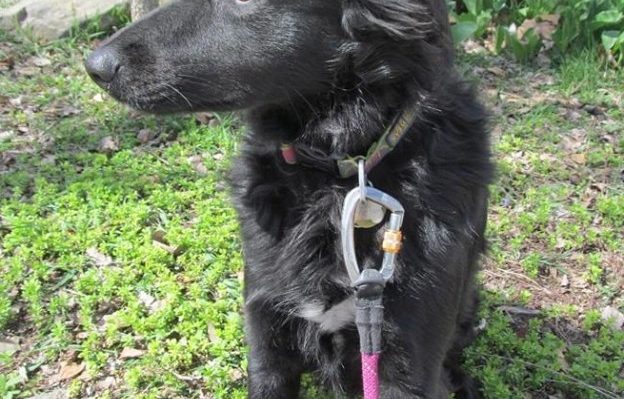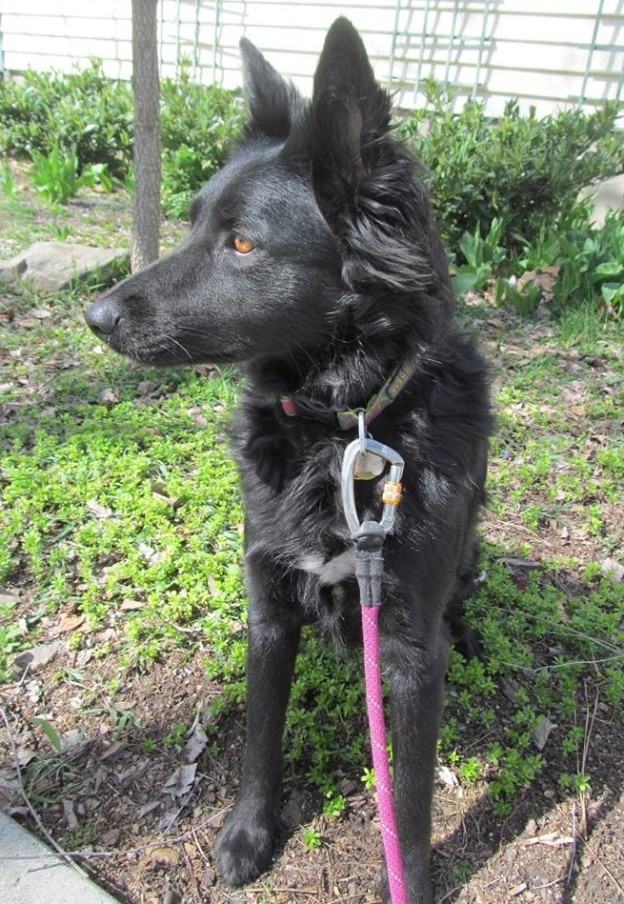
Dogs need exercise. Dogs need training. Walking your dog for exercise can be much more enjoyable if you include training on your walks together. But do it right, please. Set your cell on vibrate and stash it in your pocket or pack, put the ear buds away, and leave the fancy coffee drink at home.
Set a goal for every walk.
Your goal for today might be to get a Sit from the dog every time you stop—especially before you cross streets, because a halt there is often mandatory.
You’ve probably already trained your dog to Sit at home for a treat or before you throw the ball. You operate on the same principle here: when the dog sits, the dog gets what he wants. What he wants on a walk is almost always to keep walking!
- Stop a few feet from the street you are about to cross.
- Don’t give a cue or command. Wait for your dog to act.
- Be patient. Don’t get mad, don’t change your posture.
- Hold the leash securely, as your dog may try to pull away.
- Your dog may try everything he can to cause you to move forward with him. Eventually, it’s very likely—especially if you’ve already taught Sit at home—that your dog will sit.
- Praise with the cue word, “Good Sit!” and step forward.
(Please keep in mind that practicing this skill on crowded city streets or crossings with street lights is a somewhat different proposition—move forward only if it’s safe!)
What if your dog simply does not sit when you try it?
Give it a reasonable amount of time. That can vary depending on your location and your own temperament. Count to a certain number—maybe 50—then turn around and go back in the direction you came from. Walk half a block, turn around, approach the street crossing, try it again.

What if your dog simply does not sit when you try it?
Give it a reasonable amount of time. That can vary depending on your location and your own temperament. Count to a certain number—maybe 50—then turn around and go back in the direction you came from. Walk half a block, turn around, approach the street crossing, try it again.
Why don’t you give the cue/command if your dog knows it?
You want to dog to know when to stop without being told—you want a default behavior. You want the dog to see your stopping as the cue to sit. Again, if your dog already knows the cue Sit at home, it’s great to praise with the words “Good Sit!” when the dog sits. That confirms the name of the action the dog has just performed. The sequence is: You stop, dog sits, you praise and reward.
Sit = the dog’s rear end and both front paws on the ground
Should your dog offer a version that does not include, say, both front paws on the ground—maybe the dog is waggling one paw in eagerness or his rear is stable but his paws are tapping—that is simply not a Sit. Nothing but a Sit results in your moving forward with the dog.
Physical barriers like street crossings are a good place to start this training while walking. To begin with, it’s great to instill in your dog the compulsion to stop at every street crossing . . . for both your ease of walking together and on the off chance that some day, he might be loose and on his own. The compulsion to stop at a crossing just might save his life. In addition, physical barriers give the dog extra help in recognizing the need to stop when you stop. Your stops will be consistent there.
Once he’s got stopping at street crossings down, your dog will need further challenges. Add in random stops in likely places. Sight down the block you’re walking on and pick out a landmark—a particular house with a car in the driveway, for instance. Decide that, when you get near the car, you will stop and wait for a Sit.
At first, your dog may be surprised when you stop randomly. It’s not a street crossing! The more places you stop, the more chances the dog will have to realize that when you stop, he Sits—no matter where.
But don’t chance putting the dog into a position where it’s just as likely he will fail as succeed. Set him up for success—always! If he’s a water hound, don’t stop next to a sprinkler he can’t quite reach. If you run into friends, don’t stop and ignore your dog when he is sitting. Instead, praise for the sit, walk forward a bit with him, and keep moving as you visit.
Teaching your dog to sit for a few seconds when you stop walking is one thing. Expecting him to stay in a Sit if he’s not yet been taught how to do that sets him up to fail, not to succeed. Stay is for another day!
Remember, too, that if your stopping tells your dog to Sit, you need to avoid stopping if you don’t want the dog to sit right then and there—say, in the middle of a mud puddle. Should you mess up and stop without thinking, it’s on you, not the dog. No fair getting mad now that he’s a muddy mess. He did what he was supposed to do, and you had better praise and reward him happily. Have a good laugh at yourself, but no recriminations for the dog!
Whatever skill you choose to work on while you’re walking, don’t forget that—in addition to the mental exercise of practicing that skill—physical exercise is also part of your plan. Between stops to practice that day’s skill, let the dog be a dog: sniffing and exploring every leaf and tree, every nook and cranny, with your approval and encouragement. This is your time with your dog. Make the most of it.



